Learn about the history of vinyl, how they are made, and how they produce sound!
Though they’re almost a century old, vinyl records stand as one of the most enduring and cherished forms of music playback and play an integral role in decades of musical evolution.
Despite us being fully ensconced in the digital era, vinyl records have experienced a remarkable resurgence of late. A growing community of enthusiasts — from Gen Z to those who remember the advent of cassettes — prize vinyl records for their nostalgic feel and authenticity.
In an age of instant digital access, the comeback of vinyl records is all about having a tangible collection of music that you can actually own, not just stream. In this blog, we’ll be taking a look at what exactly vinyl records are and how they produce music, to better appreciate the appeal of this beloved format.
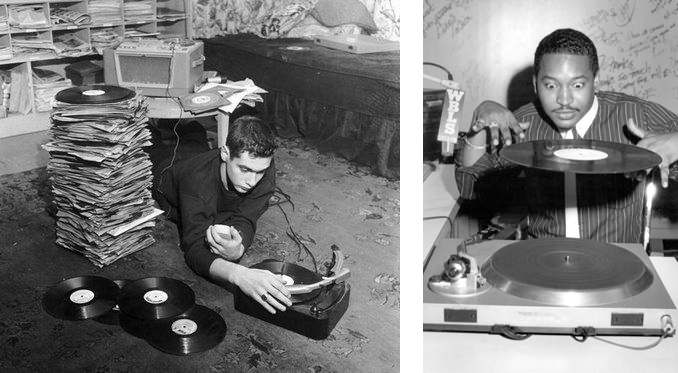
A brief history of vinyl
The history of vinyl records goes back over a hundred years, in the late 1800s when Thomas Edison’s invention of the phonograph marked the inception of recorded sound.
Over time, the gramophone emerged as an evolution of this concept, utilizing disc-shaped records. However, it wasn’t until the 1930s that vinyl records, as we recognize them today, made their debut. These records, typically 12-inch flexible plastic discs with a speed of 33 1/3 or 45 revolutions per minute, gained popularity for their durability and enhanced audio quality. At first, they didn’t take off, thanks in part to the Great Depression and a lack of disposable income amongst most Americans. Without a record player, there was no point in buying vinyl records. But then Columbia Records introduced the 12” Long Play (LP) 33 1/3 rpm microgroove record in 1948, which then became popular.
As consumers increasingly sought a more immersive audio experience, stereo records gained popularity for their ability to reproduce music in two channels, creating a sense of depth and spatiality. This innovation prompted a shift in the industry, and conventional mono LPs gradually faded from production.
As we all know, vinyls took a sharp drop in popularity when cassette tapes — and eventually CDs and digital media — were introduced into the music world. However, vinyl has enjoyed something of a renaissance lately, fueled by a renewed appreciation for analog sound and the nostalgic experience it offers.
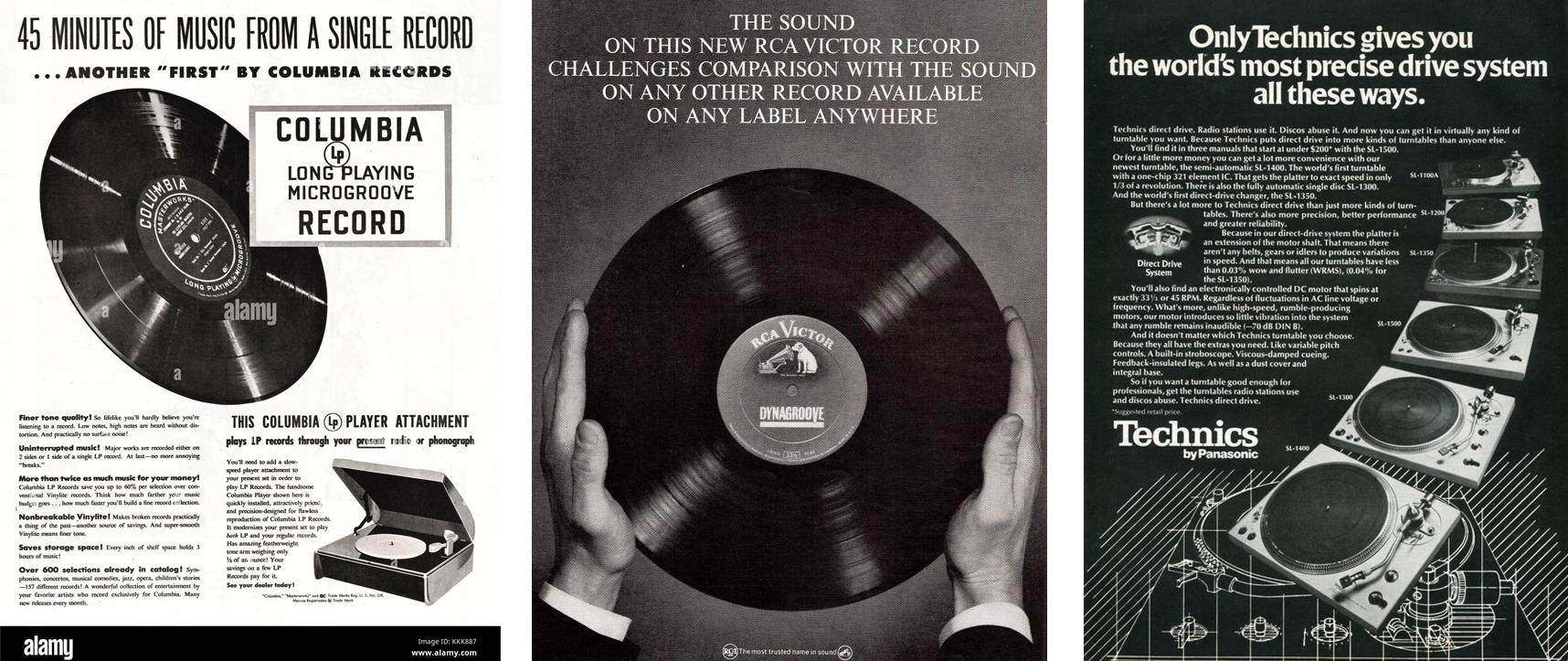
How do vinyl records work?
Vinyl records are made through a step-by-step process which seems almost like magic — but is actually quite straightforward. Let’s break it down.
Recording: Musicians perform in a recording studio, and the sound waves, which are the vibrations in the air caused by the sound that allows us to hear it, are captured digitally in the studio.
Mastering: The electrical signals are used to create a master recording. This master is like a template for making copies. They used to be in the form of 1/4” tape, but nowadays they are typically high-quality digital audio files.
Pressing: The electric signals of the master are fed into a cutting lathe to create a mold, almost like a stamp. This is typically a lacquer-covered aluminum disc carved using a diamond-tipped needle. Once you have this physical template, it can be used to create individual vinyl records. Vinyl pellets are melted, and the mold presses the grooves onto the surface of the vinyl disc. The grooves represent the variations in the music — changes in volume, pitch, and tone. Essentially, the grooves are a physical representation of the sound waves of the music — ie. what they look like as they move through the air.
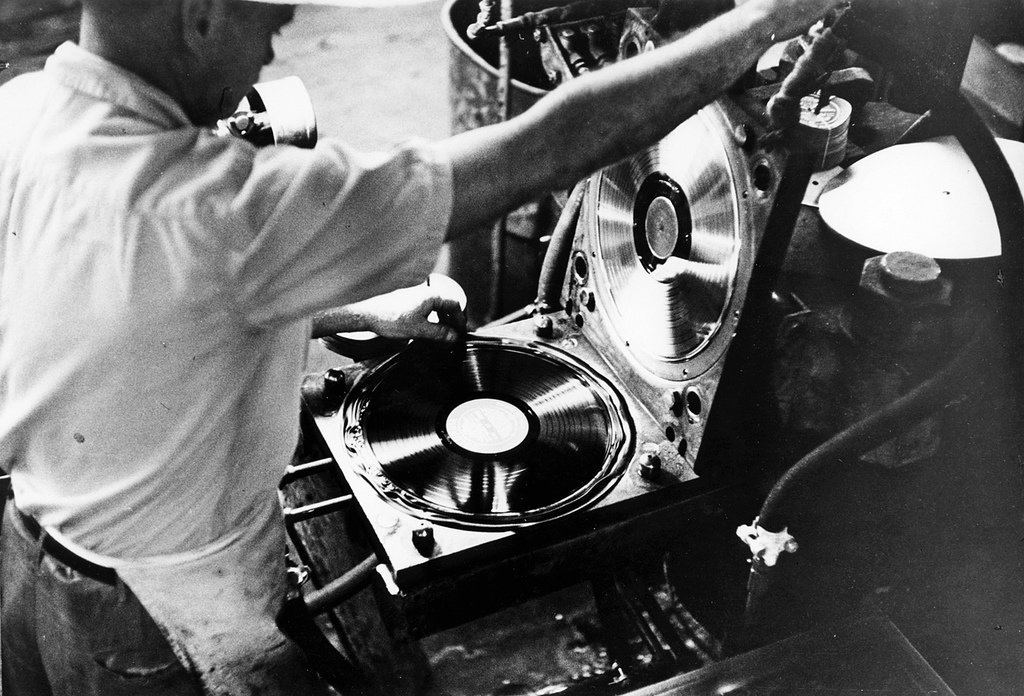
Playback: When you play a vinyl record, you place it on a turntable. The turntable spins the disc, and a needle on an arm tipped with either sapphire or diamond is laid onto the record and traces across the grooves. As the needle moves along the grooves, it vibrates back and forth.
Transduction: The vibrating needle is attached to a cartridge that transforms the physical movements of the grooves into electrical signals like the ones originally created by the musicians in the studio.
Amplification: These electrical signals are sent through the amplifier of the record player. The amplifier increases the strength of the signals.
Sound Production: The amplified signals are then sent to the speakers. The speakers convert the electrical signals back into sound waves, reproducing the original recorded music. In a nutshell, vinyl records capture the music in grooves, and a record player reads those grooves to bring the music back to life.
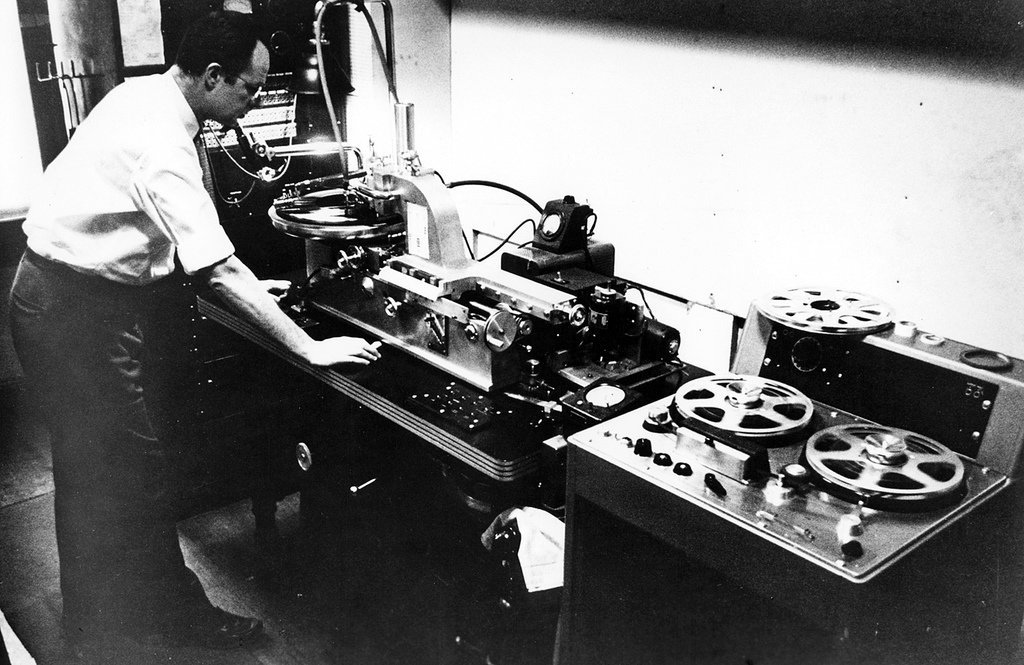
Do vinyl records sound better than digital music?
Many appreciators of vinyl records claim that they produce a warmer, fuller sound than digital media. A lot of sources seem to point to the fact that digital audio is compressed whereas vinyl is lossless and therefore sounds better.
Truly though, the debate is subjective and depends on individual preferences, as each format has its strengths and limitations. The analog nature of vinyl, with its continuous grooves, can offer a unique and often richer listening experience. Some appreciate the imperfections and nuances that vinyl can bring to the sound, making it feel more authentic.
On the other hand, digital music, especially high-quality formats like FLAC or uncompressed audio, can provide a clean, consistent sound without the pops, clicks, or surface noise associated with vinyl.
Of course, we also can’t discount the convenience and ease that comes with digital formats. At the end of the day, unless you’re a serious audio technician or aficionado, for most purposes, digital will provide an equal or superior output to vinyl, especially if you’re not using professional-grade equipment.
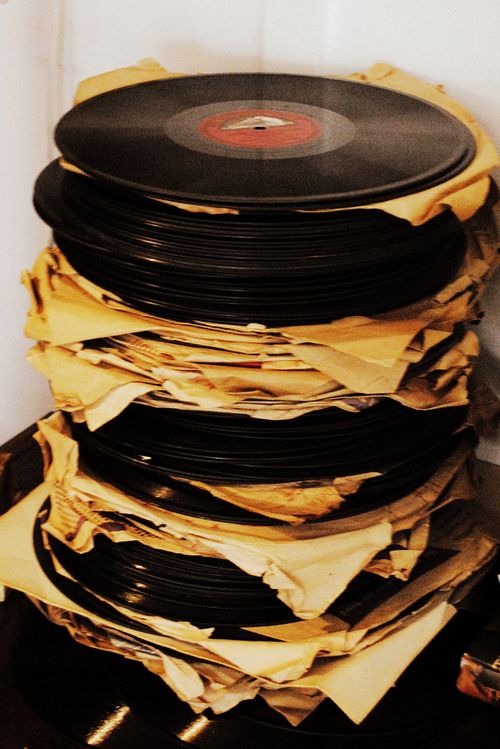
Can I digitize my vinyl record collection?
You sure can!
Many people choose to digitize their vinyl records. This will safeguard them from wear and tear associated with physical records, while also allowing for easy portability and accessibility. In other words, digitizing vinyl collections combines the charm of analog recordings with the convenience and longevity of digital technology.
If you’re looking to digitize your collection, EverPresent is the clear choice. We’re a family-run business that makes the process of digitizing music — whether you have 10 vinyls or 10,000 — an easy and painless practice. With over 30 years of experience, we treat every collection that comes to us with the same care and love that we would our own. Get in touch today and let’s chat!

